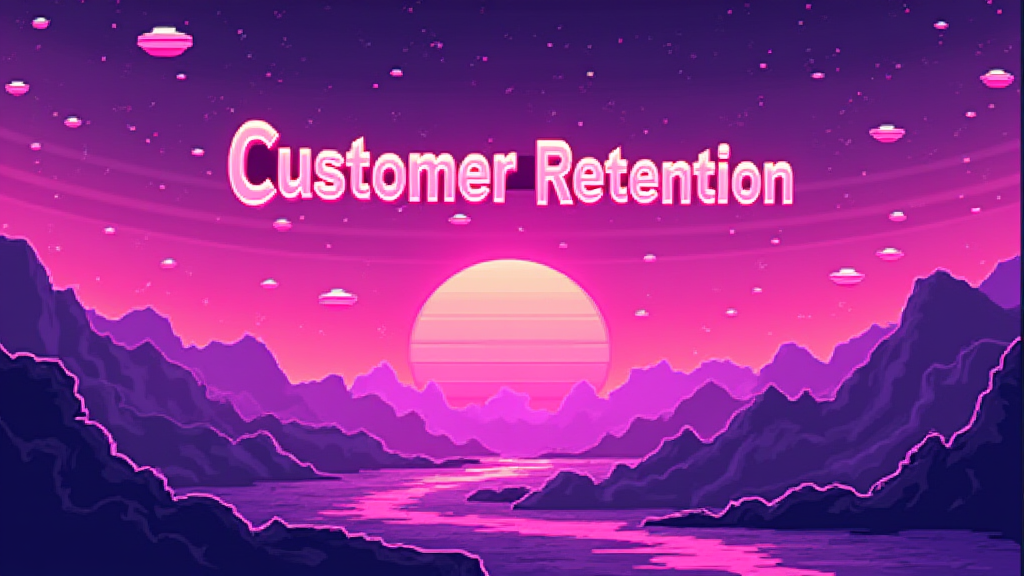Customer Retention Rate: Key Metric for Growth

Published on: October 01, 2024
Customer Retention Rate (CRR) is a crucial metric that measures the percentage of customers a company retains over a specific period. It's a vital indicator of customer satisfaction, loyalty, and the overall health of a business. Understanding and optimizing your Customer Retention Rate is essential for sustainable growth and profitability in today's competitive market landscape.
📊 How to Calculate Customer Retention Rate
The Customer Retention Rate formula is relatively straightforward:
CRR = ((E - N) / S) x 100
Where:
- E = Number of customers at the end of the period
- N = Number of new customers acquired during the period
- S = Number of customers at the start of the period
For example, if you start with 100 customers, gain 20 new ones, and end with 95 customers, your CRR would be:
CRR = ((95 - 20) / 100) x 100 = 75%
🎯 Why Customer Retention Rate Matters
Customer Retention Rate is a critical metric for several reasons:
- Cost-Effective Growth: Retaining existing customers is typically 5-25 times less expensive than acquiring new ones.
- Increased Profitability: Loyal customers tend to spend more over time and are more likely to try new products or services.
- Brand Advocacy: Satisfied, long-term customers are more likely to recommend your business to others.
- Competitive Advantage: High retention rates can set you apart in crowded markets.
🔍 Factors Influencing Customer Retention Rate
Several factors can impact your Customer Retention Rate:
- Product or service quality
- Customer service and support
- User experience and ease of use
- Pricing and perceived value
- Brand reputation and trust
- Customer engagement and communication
💡 Strategies to Improve Customer Retention Rate
To boost your Customer Retention Rate, consider implementing these strategies:
- Personalize the customer experience: Use data-driven insights to tailor interactions and offerings.
- Implement a loyalty program: Reward customers for their continued business and engagement.
- Provide exceptional customer service: Respond promptly to inquiries and resolve issues efficiently.
- Gather and act on feedback: Regularly solicit customer input and use it to improve your products or services.
- Offer ongoing value: Provide educational content, exclusive offers, or early access to new features.
🔢 Benchmarking Your Customer Retention Rate
While ideal retention rates vary by industry, here are some general benchmarks:
| Industry | Average Retention Rate |
|---|---|
| SaaS | 35-95% |
| E-commerce | 20-35% |
| Retail | 60-70% |
| Banking | 75-85% |
Remember, even small improvements in your Customer Retention Rate can significantly impact your bottom line. A 5% increase in retention can lead to a 25-95% increase in profits, according to research by Bain & Company.
🤔 Common Misconceptions About Customer Retention Rate
Be aware of these common misconceptions:
- High retention always equals success: While important, it should be balanced with other metrics like customer acquisition and lifetime value.
- One-size-fits-all approach: Retention strategies should be tailored to your specific industry, business model, and customer base.
- It's all about preventing churn: While reducing churn is crucial, focusing on creating positive experiences is equally important.
As you consider implementing strategies to improve your Customer Retention Rate, ask yourself:
- How does our current retention rate compare to industry benchmarks?
- What are the primary reasons customers leave our business?
- How can we leverage data and technology to personalize the customer experience?
- What untapped opportunities exist for adding value to our customer relationships?
- How can we better align our sales, marketing, and customer service efforts to improve retention?
By focusing on these questions and continuously working to improve your Customer Retention Rate, you'll be well-positioned to drive sustainable growth and success in your business.

















